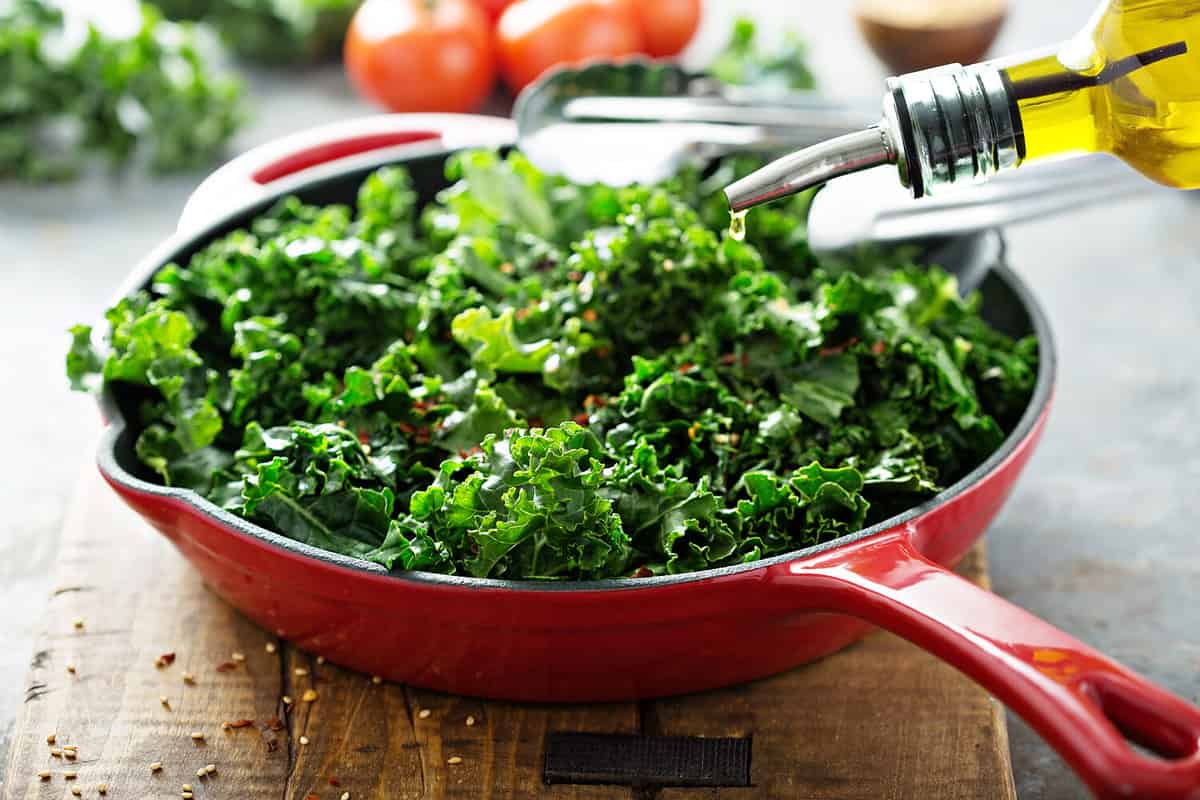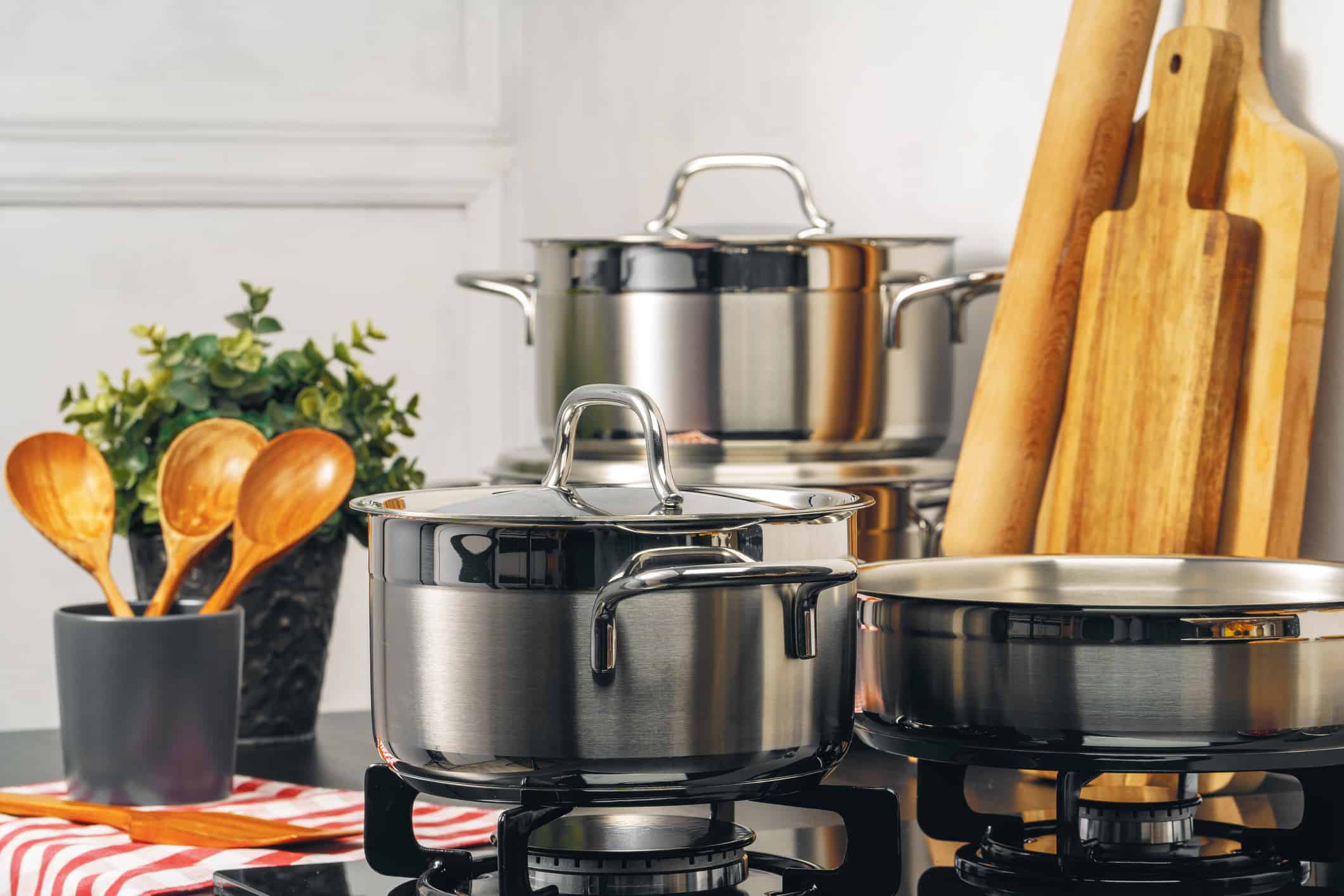If you cook in any capacity, either in your home kitchen or in a professional space, you likely have a lot of experience with stainless steel pans. These are supposed to be the miracle cure for cooks who are sick of having their cookware rust, break, and become rendered useless over time. However, are these pans really that good, or do they have a bad side? Today, we’ll talk about the reasons to avoid cooking with stainless steel and some alternatives you can consider instead for ease of cooking during your next meal.
What is Stainless Steel?
Stainless steel cookware can come in many forms. It can be a saucepan, stockpot, frying pan, a rondeau, and more. It’s an alloy that is made up of parts of nickel and chromium and can also include carbon and other elements depending on its use. The inclusion of chromium means that the cookware is resistant to corrosion. Stainless steel is also quite durable and is three times stronger than ordinary steel. It’s also quite hard, which makes it more difficult to break.
This material also has a very high melting point that is much higher than that in copper or aluminum. Stainless steel is also very resistant to wear and tear, and it’s very dense, which makes it good for cookware. It’s the same material that many sinks are made of, which makes them very durable and easy to clean. Pair your cookware with stainless steel cutlery that is also very resistant to corrosion.
Reasons to Avoid Cooking With Stainless Steel
Up until this point, you’re probably thinking that stainless steel is the best type of pan you could possibly buy. However, like many things, there are several downsides to stainless steel, and we present them here.
1. It’s Expensive
One of the biggest drawbacks of stainless steel is that it’s more expensive than most other forms of cookware, including carbon steel, nonstick, and cast iron. That’s due to the high-quality materials. The process of creating stainless steel also takes longer because it’s bonded construction. Anything that takes longer is going to cost more, and these pans are no exception.
Most cast iron is also considered “fully clad,” which means it’s stronger and the sidewalls are thicker so that added material is part of the cost. While they’re all generally costly, the final price will depend on the manufacturer.
2. Cooking Is Inconsistent
When many people buy cookware, they typically choose multiple items from the same material. So, all copper, all cast iron, etc.
In the case of stainless steel, you have to be careful. That’s because no two pieces of stainless steel cookware are the same, and that means that the cooking and heating can be inconsistent. If you try to save money and go for a cheaper piece, it could have poor cooking performance. Some pans will be thicker, some will be fully-clad, etc. So, if you buy multiple different pans, make sure to choose those that are made the same.
3. Food Sticks to It
Although it may look like it, stainless steel is not completely nonstick. It is more non-stick than some other types of cookware, but not completely so. Fish, eggs, and other delicate ingredients will stick if you’re not careful.
There are things you can do to avoid food from sticking. One is to never overheat the pan because it heats so well that it can go overboard, and the food is compromised. You can also preheat the pan and add plenty of oil to grease the cooking surface.
4. Hard to Clean
Because it’s not nonstick, if you’re not careful, food will get stuck, and it can be very difficult to remove. If you don’t properly maintain the pan, it could develop discoloration over time. There’s also the possibility of heat tint, which is the blotchy blue stains that you can often see on the surface of cookware. The best way to avoid this is to always keep the burner at medium heat. In most cases, medium heat will be all you need to cook your food to perfection in a stainless steel pot.
5. It’s Not Really for Beginners
If this is your first piece of cookware, then you might struggle a bit at first since it’s heavy and food can stick. It’s better to go with a nonstick pan at the beginning, which is also a cheaper option. Then, when you’re ready, make a better investment and go for the stainless steel.
6. It’s Heavy
Stainless steel cookware is generally heavier than many other options. The higher quality you buy, the heavier it will be. Stainless steel with five bonded layers will be the heaviest. That type of pan could weigh 4-6 pounds.
Benefits of Stainless Steel
Stainless steel can be a better choice once you’re ready because it’s very versatile. You can do everything from sauteing vegetables and simmering sauces to browning chicken and more. For that reason, one stainless steel pain can replace several other pieces of cookware that you’d use to make the same thing.
As we mentioned, stainless steel is also quite durable, and since it doesn’t scratch, rust, or flake, it can last for years. Stainless steel is also quite responsive, and it will heat and cool quickly. This material can also be used on all cooktops, whether it be electric, gas, or induction. It is even oven and broiler-safe. Also, since it’s not nonstick, there aren’t any chemical substances to worry about. Finally, it has a sleek design that can improve the look of any kitchen.
Alternatives to Stainless Steel

There are many suitable alternatives to stainless steel, including cast iron.
©Elena Veselova/Shutterstock.com
Since we tell you to avoid cooking with stainless steel, we need to advise you of a few alternative materials you can use instead. Some of the best options include:
Nonstick Ceramic – This type of cookware is sleek and offers very easy food release. Once you’re done cooking, ceramic is easy to clean because the food wipes right off. Like stainless steel, there are also no toxic fumes if you preheat.
Cast Iron – This is a budget-friendly alternative that is also versatile and can last for years, like stainless steel. You can also use cast iron on any cooktop. Once it gets hot, it stays hot, so you can ensure a thorough cook.
Copper – Copper is an incredible conductor of heat, and it gets hot quickly. As soon as you take it off of the burner, the pan cools down, so you have complete control. The downside is that it’s not good for cooking acidic foods. Like stainless steel, copper is also quite expensive, often costing hundreds of dollars for one pan.
Aluminum – This is another metal that heats quickly, but unlike stainless steel, aluminum is quite lightweight, and it’s also very affordable. You could buy several aluminum pans and equal the cost of one stainless steel. However, like copper, it also reacts negatively with many acidic foods, and so the uses are somewhat limited. Aluminum pans are often nonstick, which can cut out a lot of frustration.
Carbon Steel – The final option, carbon steel, is pretty good with heat conductivity. It’s also quite inexpensive and durable. Also, if properly maintained and seasoned, carbon steel will last for a long time and not rust. A carbon steel pan can also tolerate hotter heat without becoming damaged, which is something it has above stainless steel.
Conclusion
These are the reasons to avoid cooking with stainless steel. It’s certainly not the worst type of cookware material on the market, but it does have its drawbacks. That’s not to say that you shouldn't use it. Do your research, and if you find it’s the best option, then go for it and make a fantastic meal.
The image featured at the top of this post is ©FabrikaCr/ via Getty Images
